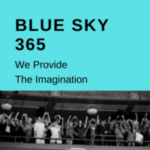Social media monitoring practices are, in reality, reading comprehension, engagement, and data analysis practices that generally involve the following four different online profile types: customer, product, campaign, and competitor activities.
Social media command centers in large corporations such as Dell and Gatorade (Pepsi) monitor human engagement with readers and analysts.
Readers, sometimes called listeners, read large amounts of conversational information generated by people communicating on various digital platforms.
These online conversations are in some cases responded to, stored, and analyzed by analysts (quantitative and qualitative specialists).
To perform digital conversational monitoring successfully, a reader’s comprehension skills should be good. This is why recent research regarding reading versus listening comprehension becomes relevant to social media monitoring.
Research has shown that listeners and readers understand different parts of information differently. Listening is defined as understanding, interpreting, and evaluating what a person hears from a speaker; reading on the other hand is a complex cognitive process of decoding symbols with the intention of constructing or deriving meaning (reading comprehension). Both listening and reading involve comprehension, but different decoding processes. That is, the path to comprehension is different, suggested a study at the University of California at Los Angeles (Song, 2008).
Comprehension is a process shared by listening and reading activities. Listening and reading skills are teachable, and each has positive and different learning qualities; many people are better at one process than the other. It can be argued that best practice conditions for the monitoring of social media activities, on a social media listening dashboard over extended periods of time, would be to use reading and listening strategies.
The following studies suggest that listeners take a more active approach to learning, constructing, and reconstructing the learned information as it is heard. They are more motivated to use additional sources or detective-like research to arrive at the main idea of what they have heard. This approach would very be useful to social media monitoring centers, because the added research can be easily accomplished online. Additionally, their research would likely uncover useful conversation threads, influencers, conversational intent, semantic understanding (demographics, engagement, influencers, actions, emotions), and community activity that would benefit a brand’s online objectives.
Research on Readers Versus Listeners
Two studies found that readers recalled more detail surrounding the main idea of written material, while listeners were able to grasp more of the higher-order main ideas than readers. (Lund 1991, Lesser 2004)
In an online study that compared listening to reading, researchers found that listeners were more motivated, had more interest to search out additional information online to fill gaps in understanding, and were motivated to have a more deep and fuller appreciation of the listening material. Listeners remembered more than readers. Readers on the other hand were not motivated to use any outside sources to fill in their understanding of written material, and only wanted to complete the reading task. (Absalom & Rizzi, 2008)
Two studies of listeners and readers found that main ideas and main idea questions were more easily discovered and answerable by listeners. Readers on the other hand recalled better detail and detail questions. Lund (1991), Park (2004)
A Harvard University study found that people remember 70% of information when provided the opportunity to see and hear a presentation, rather than 20% for hearing it only, and 30% for seeing it only.
Listening and reading have comprehension in common, but the way in which they gather the full information, or what the researcher calls decode information, are different. (Song, 2008)
As consumer conversation grows and becomes denser online, the increase in social media listening technology will become commonplace in companies large and small. Brands involved in this activity will also need to have a reproducible, predictable model for success.
One of the elements of this success model is for brands to add listening and reading processes into their social media monitoring environments. It will help establish a center-of-excellence approach to comprehending and engaging with their brand’s customers online.
This solution would be particularly helpful as human reading comprehension levels tend to weaken over extended periods interpreting text generated from a social media monitoring dashboard. An alternative quick fix solution to improving current social monitoring practices would be to evaluate a social reader’s comprehension level. Much like a proofreader is evaluated to determine if (s)he has good mental error detection skills, social media monitors could be evaluated for reading comprehension strengths.
Why? Because research suggests that some of us are better listeners than readers, and the use of both techniques can produce a better outcome.
Currently, even the most robust social monitoring platforms, including Radian 6, do not provide for an audio option as part of their social media monitoring dashboard suite. In a recent conversation with a Radian 6 representative, and without discussing the latest listening research, I suggested that an audio option would be helpful. They found the idea intriguing, almost to the point of saying, why didn’t we think of it already?
Will we see an audio option in social monitoring dashboards in the future? I think we will.
That being said, are current state-of-the-art social media monitoring command centers performing well? Probably, but they could achieve better results by combining reading and listening, and testing social monitoring teams’ reading comprehension levels.
What can be done to improve customer behavioral analysis of social media monitoring engagement and data?
As brands’ social conversations grow online and become more complex, there will be a greater need to have a deeper understanding of human conversational behavior beyond what quantitative and qualitative analysis currently provides. One way to achieve this is for a psychologist to become part of a social media monitoring team.
A psychologist could work closely with a brand’s quantitative and qualitative experts to build a more complete picture or story of current and potential consumer behavior and behavioral trends. Current social media monitoring platforms and tools see what is trending online, but they can not scientifically help to predict or evaluate trending behavior.
Over the next several years as social listening becomes more widespread, many more midsize and smaller businesses will begin using social media monitoring tools. Competition will increase online, and this increased competition for digital shelf space will increase the need for behavioral analysis by these professionals.
Psychology experts could also work with brands’ quantitative and qualitative specialists who analyze the following areas: digital sentiment, negative, positive and neutral key words, product satisfaction and dissatisfaction, competitor activity strategy, community conversational strategies, themes, perceptions, language and tones, and what motivates these trends around a brand and its competitors.
Ultimately, and equally important, a psychologist could also help to create more predictable social engagement models so that they can be reproduced and provide a greater company ROI.
Psychology specialists could take on two scientific focuses. The first will involve increasing an individual’s or online community’s sense of its own well-being regarding a product, service, or brand.
They could also employ a range of dialogue, communication, and behavioral change techniques. These techniques will be designed to improve the perspective of an online customer, competitors customer, community member or potential brand evangelist.
The second behavioral focus would be to perform functional analysis monitoring techniques. This task would actively provide behavior analysis, and collect and analyze data (hugely important in social media monitoring) on changes in online community and customer behavior. These changes could occur as a result of a brand, a fan, or a customer’s direct manipulation of an online event or conversation.
Once a brand’s online data is collected, actionable results would be required to keep a brand in trend and competitive digitally.
As Madison Avenue’s advertising agencies in the 1960s added experts in psychology to increase their understanding of consumers, so will today’s maturing creative digital agencies and brands. Psychologists will eventually become an integral part of brands’ engagement teams, to better understand behavior through social media monitoring activities. Algorithms are great for automation, data processing, and automated reasoning, but they are not effective in understanding human psychological behavioral.
Current brand management practices on the social media monitoring side could also achieve better results by adding reading and listening together, and adding reading comprehension testing to their practice model.

